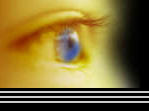|
not of this realm. What?????? read on to find out.
please share your ideas with me.
|
|

The story of the Mitchell-
Hedges
skull's discovery
was a hoax, but its origins
remain a mystery.
The Mitchell-Hedges Skull:
King of the Crystal Skulls
The most widely celebrated
and mysterious crystal skull is the Mitchell-Hedges Skull, for at least two good reasons. First, it is very similar in form
to an actual human skull, even featuring a fitted removable jawbone. Most known crystal skulls are of a more stylized structure,
often with unrealistic features and teeth that are simply etched onto a single skull piece.
Second, it is impossible
to say how the Mitchell-Hedges skull was constructed. From a technical standpoint, it appears to be an impossible object which
today's most talented sculptors and engineers would be unable to duplicate.
The discovery of this baffling artifact
is a controversial matter. It was brought into prominence by British explorer F. A. Mitchell-Hedges, who claimed that his
daughter unearthed it in 1924. Mitchell-Hedges led an expedition in the ancient Mayan ruins of Lubaantun, in Belize (then
British Honduras), searching for evidence of Atlantis.
The story goes that his daughter, Anna, was rummaging inside
a structure believed to have once been a temple, when she found the beautifully carved cranium of the crystal skull. It was
lacking its jawbone, but the matching mandible was found three months later, some 25 feet away from the first discovery. Mitchell-Hedges
claimed that he refused to take the skull away, and offered it to the local priests, but the Mayans gave the skull back to
him as a gift upon his departure.
It now appears that this tale of the skull's discovery was entirely fabricated.
Mitchell-Hedges apparently purchased the skull at an auction at Sothebys in London, in 1943. This has been verified by documents
at the British Museum, which had bid against Mitchell-Hedges for the crystal artifact.
This revelation is consistent
with the known history of Mitchell-Hedges's involvement with the skull. There are no photographs of the skull among those
that were taken during his Lubaatun expedition, and there is no documentation of Mitchell-Hedges displaying or even acknowledging
the skull prior to 1943.
The skull remains in the possession of the octogenarian Anna Mitchell-Hedges. She resides
in Canada and displays the skull on frequent tours. Anna has maintained for all these years that she discovered the skull,
even though there is reason to doubt that she was present at the Lubaatun expedition at all.
The Mitchell-Hedges skull
is made of clear quartz crystal, and both cranium and mandible are believed to have come from the same solid block. It weighs
11.7 pounds and is about five inches high, five inches wide, and seven inches long. Except for slight anomalies in the temples
and cheekbones, it is a virtually anatomically correct replica of a human skull. Because of its small size and other characteristics,
it is thought more closely to resemble a female skull -- and this has led some to refer to the Mitchell-Hedges skull as a
"she."
The Mitchell-Hedges family loaned the skull to Hewlett-Packard Laboratories for extensive study in 1970. Art
restorer Frank Dorland oversaw the testing at the Santa Clara, California, computer equipment manufacturer, a leading facility
for crystal research. The HP examinations yielded some startling results.
Researchers found that the skull had been
carved against the natural axis of the crystal. Modern crystal sculptors always take into account the axis, or orientation
of the crystal's molecular symmetry, because if they carve "against the grain," the piece is bound to shatter -- even with
the use of lasers and other high-tech cutting methods.
To compound the strangeness, HP could find no microscopic scratches
on the crystal which would indicate it had been carved with metal instruments. Dorland's best hypothesis for the skull's construction
is that it was roughly hewn out with diamonds, and then the detail work was meticulously done with a gentle solution of silicon
sand and water. The exhausting job -- assuming it could possibly be done in this way -- would have required man-hours adding
up to 300 years to complete.
Under these circumstances, experts believe that successfully crafting a shape as complex
as the Mitchell-Hedges skull is impossible; as one HP researcher is said to have remarked, "The damned thing simply shouldn't
be." |
|

